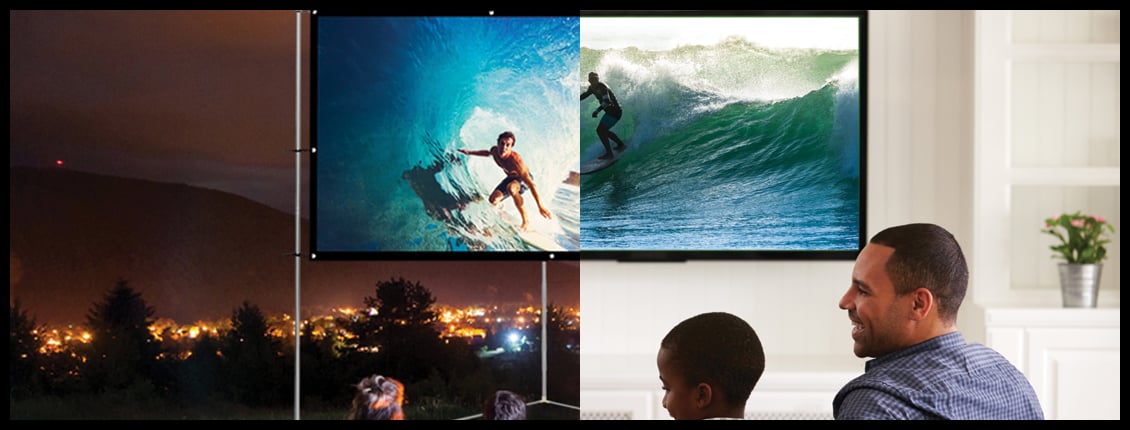
According to a study published by The Atlantic, the average American household still watches nearly 8 hours of TV per day—and that’s not even counting streaming services like YouTube or Netflix. Then there are the other uses that consumers regularly make of their home theater setups, including gaming or watching DVDs and Blu-rays. But the technological methods by which TV is enjoyed are not all alike. And for homeowners, the choice is clearly not one to be taken lightly. Setting up a home theater is no small feat. For those working on home theater installation, choosing between a flat-panel TV or a projector and screen, a comparison of features and benefits should always be taken into account prior to purchase.
Cost: Breaking the Bank?
High-quality flat-panel TVs from leading manufacturers like Samsung usually retail for less than $1,000 (and often less than $500). Even 4K TVs are experiencing price drops as OLED TVs become the next big thing, as those prices often push $1,500.
Most home theater projectors are more expensive (for reasons that will become clearer below), in most cases exceeding $1,000. Some high-end projectors can even retail for more than $10,000!
Installation: Headache or Handy?
Anyone can purchase and easily set up a TV with little to no hassle. TVs also power on quicker than most projectors and consume far less energy than their high-end counterparts. Once properly installed, most TVs require little to no visible, messy wire connections for a clean, comfortable appearance. TVs can also be easily repositioned when redesigning or remodeling a room.
Projectors require a longer installation process, as they tend to be more permanent. Projectors are often installed as high as possible towards the back of the room. Additionally, cords and cables run from the projector to a cable box, DVD/Blu-ray player, game console, etc. making for an often-cluttered appearance. Room layout, screen size and viewing angle are difficult to change when customers consider remodeling or redesigning their home theater space.
Setting: Lights, Camera…
Once homeowners install their flat-panel TVs in their chosen location, they tend not to move them much. TVs can function in almost any environment, regardless of lighting or room dimensions. On the plus side, watching movies with the lights on is not an issue.
Customers can take mobile projectors anywhere—for example, to a friend’s house to watch the big game. However, full enjoyment depends on blocking out other sources of light. Projectors work best outdoors once twilight arrives.
Image Size: You’re Gonna Need a Bigger Screen
A proper home theater setup demands a large screen size, which for most TVs would be at least 50 inches. 65 inches is usually the recommended minimum for an enjoyable TV experience. Some TVs exceed 105 inches; it simply depends on your customers’ space and preference.
Projectors allow for images that are easily four times larger than a 65-inch TV display, giving the viewer a more immersive and visually impressive experience.
Other Features
The latest TVs offer a plethora of features, many relating to image quality (4K, Ultra HD), plus smart compatibility and built-in streaming ability for services such as Netflix.
These features are more enjoyable on larger projector screen sizes— all with the added bonus of appealing to a more minimalist lifestyle.
The Choice Is the Customer’s
For those interested in a massive image and dedicated home theater room, projectors offer an awe-inspiring experience under the right lighting conditions and room design. Alternatively, for those who want convenience and a mostly hassle-free installation, flat-panel TVs are the best choice. And for accessories and installation inventory, make sure to check out the Home Theater & Custom Install category on order.petra.com
